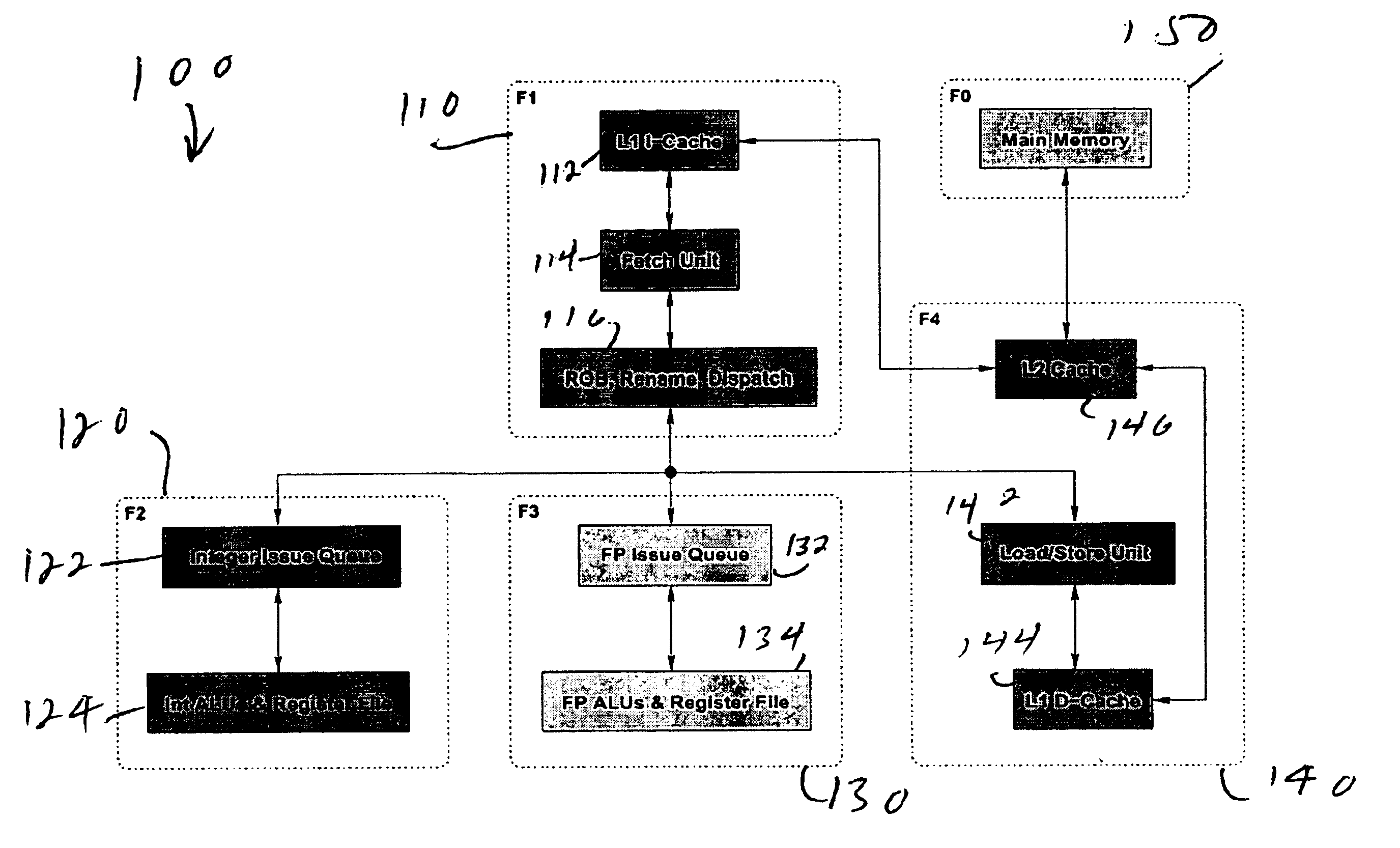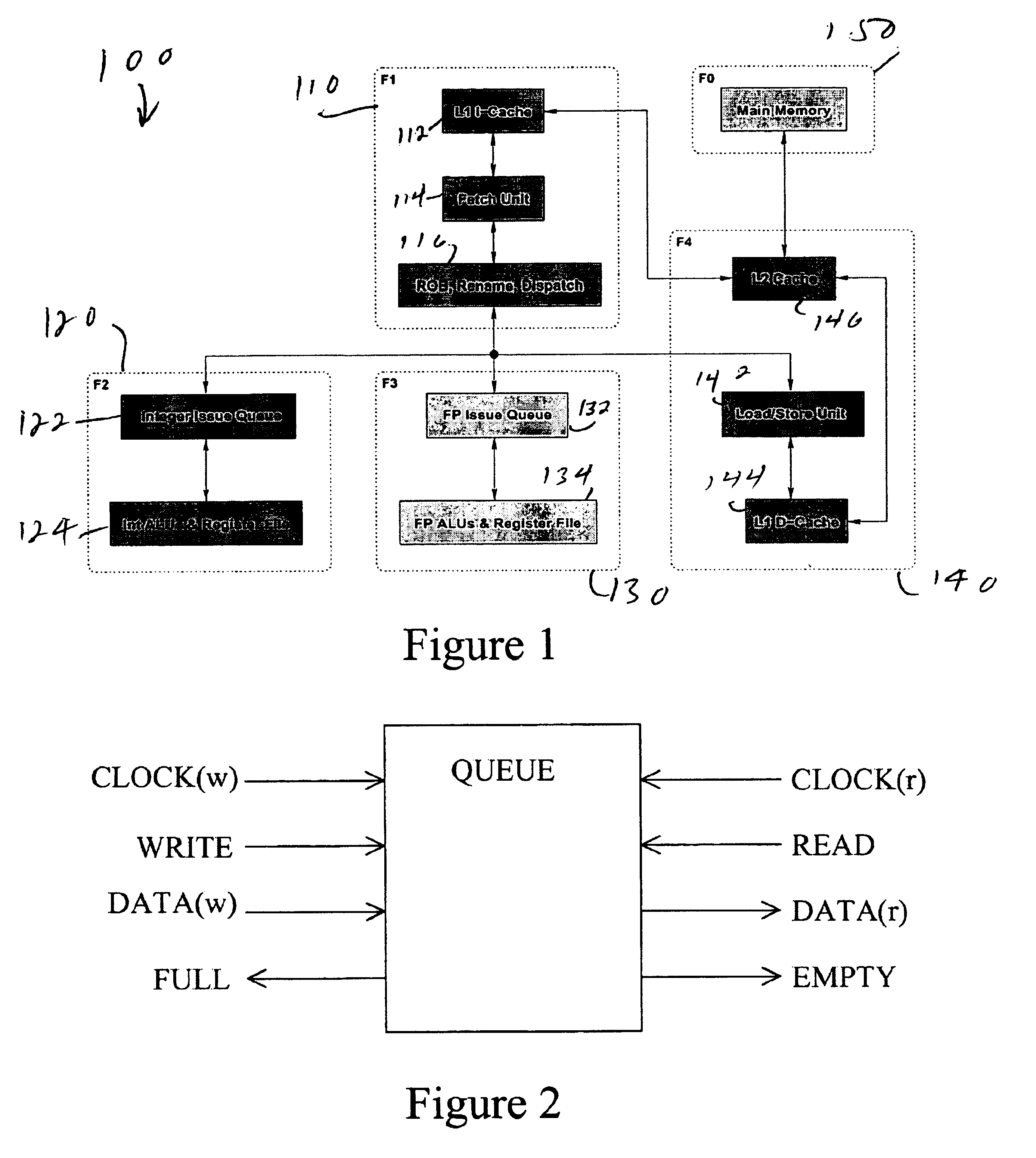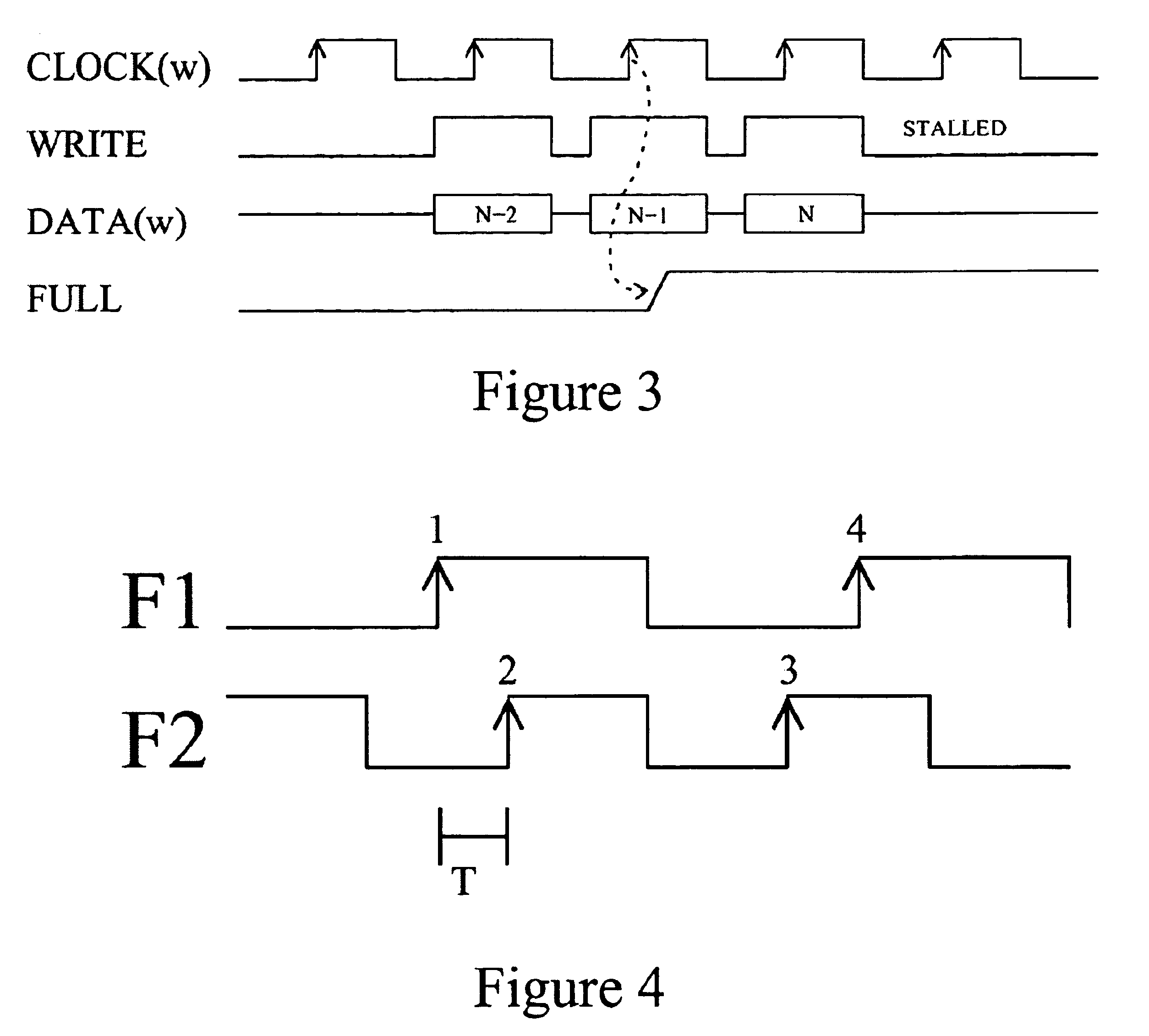Multiple clock domain microprocessor
a microprocessor and clock domain technology, applied in the field of microprocessors, can solve the problems that benchmarks have not traditionally been candidates for voltage and frequency scaling
- Summary
- Abstract
- Description
- Claims
- Application Information
AI Technical Summary
Benefits of technology
Problems solved by technology
Method used
Image
Examples
Embodiment Construction
[0061]Matzke has estimated that as technology scales down to a 0.1 μm feature size, only 16% of the die will be reachable within a single clock cycle [24]. Assuming a chip multiprocessor with two processors per die, each processor would need to have a minimum of three equal-size clock domains. The preferred embodiment uses four domains, one of which includes the L2 cache, so that domains may vary somewhat in size and still be covered by a single clock. In effect, we treat the main memory interface as a fifth clock domain, external to the MCD processor, and always running at full speed.
[0062]In choosing the boundaries between domains, we attempted to identify points where (a) there already existed a queue structure that served to decouple different pipeline functions, or (b) there was relatively little inter-function communication. Our four chosen domains, shown in the architecture 100 of FIG. 1, comprise the front end 110 (including instruction cache 112, fetch unit 114, and branch ...
PUM
 Login to View More
Login to View More Abstract
Description
Claims
Application Information
 Login to View More
Login to View More - R&D
- Intellectual Property
- Life Sciences
- Materials
- Tech Scout
- Unparalleled Data Quality
- Higher Quality Content
- 60% Fewer Hallucinations
Browse by: Latest US Patents, China's latest patents, Technical Efficacy Thesaurus, Application Domain, Technology Topic, Popular Technical Reports.
© 2025 PatSnap. All rights reserved.Legal|Privacy policy|Modern Slavery Act Transparency Statement|Sitemap|About US| Contact US: help@patsnap.com



